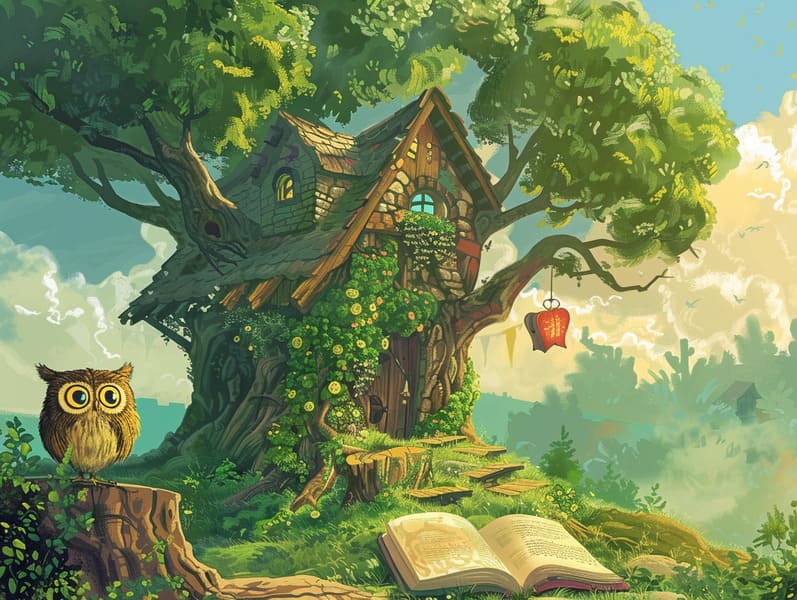
Children's fairy tales have old origins. These stories have been transmitted from one generation to the next far before they were ever transcribed. They developed from a variety of civilizations, including Western traditions. They were initially narrated among older generations, often carrying themes and messages mirroring the societal norms and beliefs of the time.
The Grimm brothers, Jacob and Wilhelm (the Grimm brothers), were among the first to compile and publish many of these beloved stories. Their published works, "Grimm's Children's Stories," included tales like "Ashenputtel," "Hansel and Gretel," and "Little Snow White," which have since become mainstays in the world of famous fairy tales. Similarly, the Danish author's enchanting narratives, such as "The Story of the Little Mermaid," and "The Ugly Duckling," have captivated hearts worldwide, solidifying their place in the pantheon of iconic fairy tales.
Though they are old, these stories remain as pertinent as ever, especially as nighttime stories for kids. These charming stories are now available in many formats, including gorgeously illustrated books, charming animations, and online fairy tales.
Their unwavering allure can be linked to several magical reasons:
Valuable Lessons: Ancient fairy tales often convey important moral lessons. Fairy tales like "The Tale of the Boy Who Cried Wolf" teach the value of sincerity, while "The Tale of the Tortoise and the Hare" highlight the benefits of persistence and humility. These narratives offer young ones clear distinctions between correct and incorrect, shaping their moral compass in a mild yet deep way.
Kindness and Comprehension: Fairy tales frequently feature characters facing obstacles and hardships, urging audiences to comprehend with their struggles and back their triumphs. For instance, "Beauty and Her Beast" demonstrates the importance of seeing beyond looks to realize the true essence of a character, cultivating warmth and comprehension.
Cultural Insights: Many fairy tales are deeply embedded in the cultural contexts from which they blossomed. Exploring these tales can provide captivating looks into different heritages, strengthening a sense of world insight and acknowledgment.
Fantasy and Innovation: The extraordinary elements in ancient fairy tales—magic wands—trigger children’s imaginative ideas. These fairy tales transport readers to magical realms, enhancing innovative dreams and a sense of wonder that lasts a lifetime.
Old fairy tales are not only whimsical but also enlightening. They provide fascinating tools in building various cognitive and affective skills in young readers. When timeless fairy tales are narrated, they improve language acquisition by showing new terms and meanings and intricate sentence structures. This practice also boosts hearing this site perception and mental focus, as young readers remain attentive, excited to see what happens next.
Furthermore, conversing about the themes and characters of timeless fairy tales can strengthen intellectual skills and evaluative skills. Little ones are guided to discover patterns, forecast, and understand cause and effect. These examinations also promote young readers reveal their thoughts and feelings, fostering their emotional intelligence.
In today’s cyber age, the abundance of web-based fairy tales has made these narratives more acquirable than ever. Digital sites and mobile apps give large libraries of bedtime fairy tales that can be browsed or listened via anytime, anywhere. Fairy tales read aloud are particularly popular, featuring an interactive method for young ones to experience these enchanting tales. Voice books and voiced videos bring characters and settings to life, often paired with enchanting harmonies and music that improve the narrative experience.
The persistent attraction of traditional fairy tales lies in their ability to adapt to modern times while retaining their fundamental ideas. Contemporary adaptations of these tales often showcase more diverse protagonists and modern settings, making them relatable to today’s audience. However, the main ideas of spirit, benevolence, and justice remain unchanged, continuing to impact audiences of all ages.
Timeless fairy tales also offer a sense of reassurance and familiarity. They present to a coherent narrative with a recognizable beginning, middle, and end, often drawing to a close with the finalization of conflicts and the triumph of morality over immorality. This reliability can be comforting for the young, offering a sense of steadfastness in an variable world.
Timeless fairy tales continue to enchant and educate new generations, maintaining their spell and relevance in modern society. As nighttime stories for kids, they disclose a perfect blend of charm and understanding, supporting moral values, empathy, and creativity. The proliferation of online fairy tales and the popularity of fairy tales voiced ratify that these traditional tales remain available to new generations.
By continuing and passing on these narratives, we continue to venerate the rich tapestry of mythology and cultural heritage. Whether you are seeing a vibrantly illustrated book, discovering a web-based library, or listening through an read-aloud story, the grandeur of Grimm's fairy tales is always within reach. These narratives highlight of the persistent strength of storytelling and its ability to link us across generations and cultures.
Whether you are experiencing a artistically illustrated book, browsing a digital library, or playing an audio story, the loveliness of Grimm's fairy tales is always within reach.
These narratives highlight of the timeless power of fairy tales and its ability to tie us across time and space, creating a bond that charms and informs alike.
Comments on “The Birth of Grimm's Fairy Tales with Their Unending Magic.”